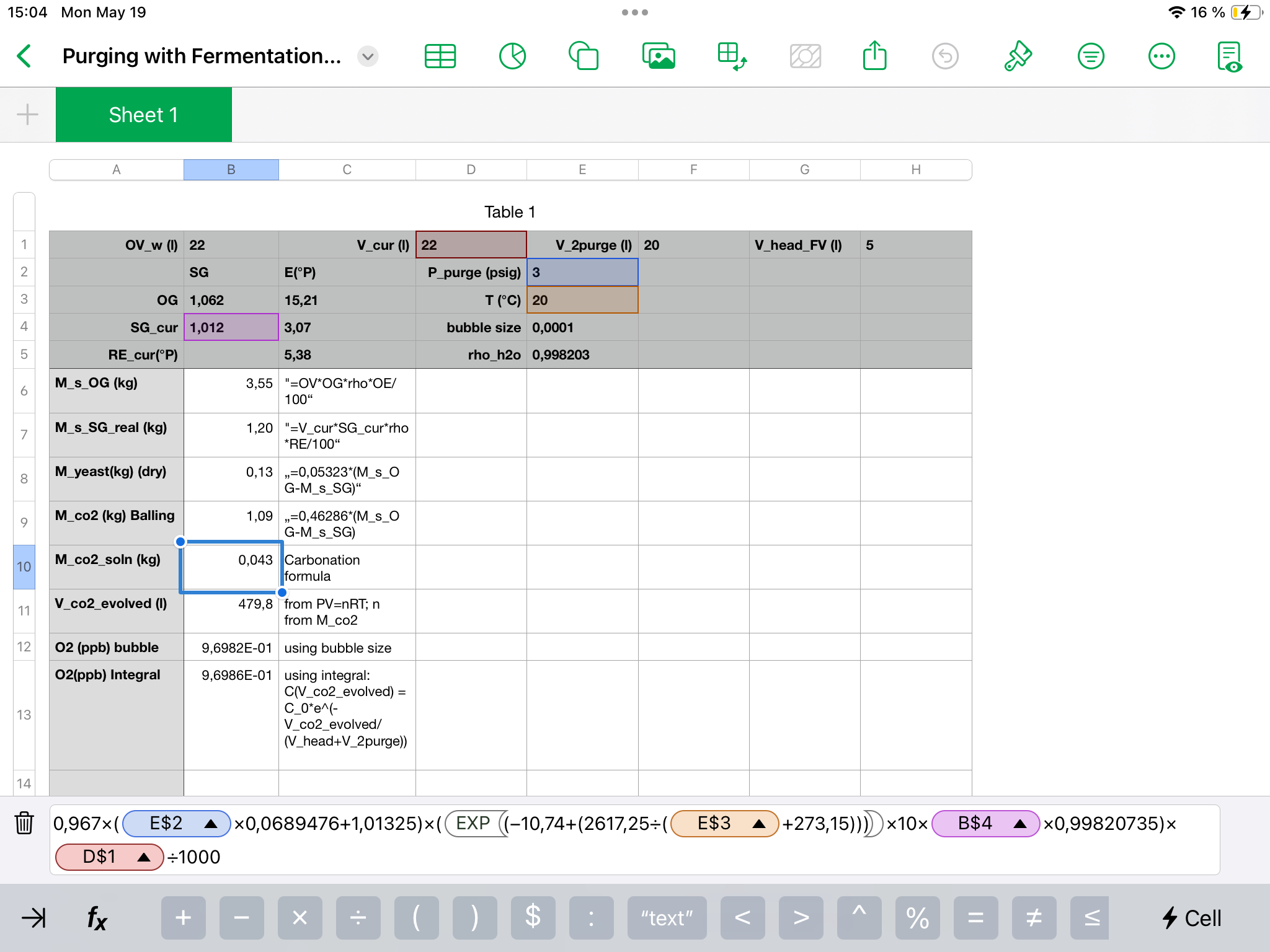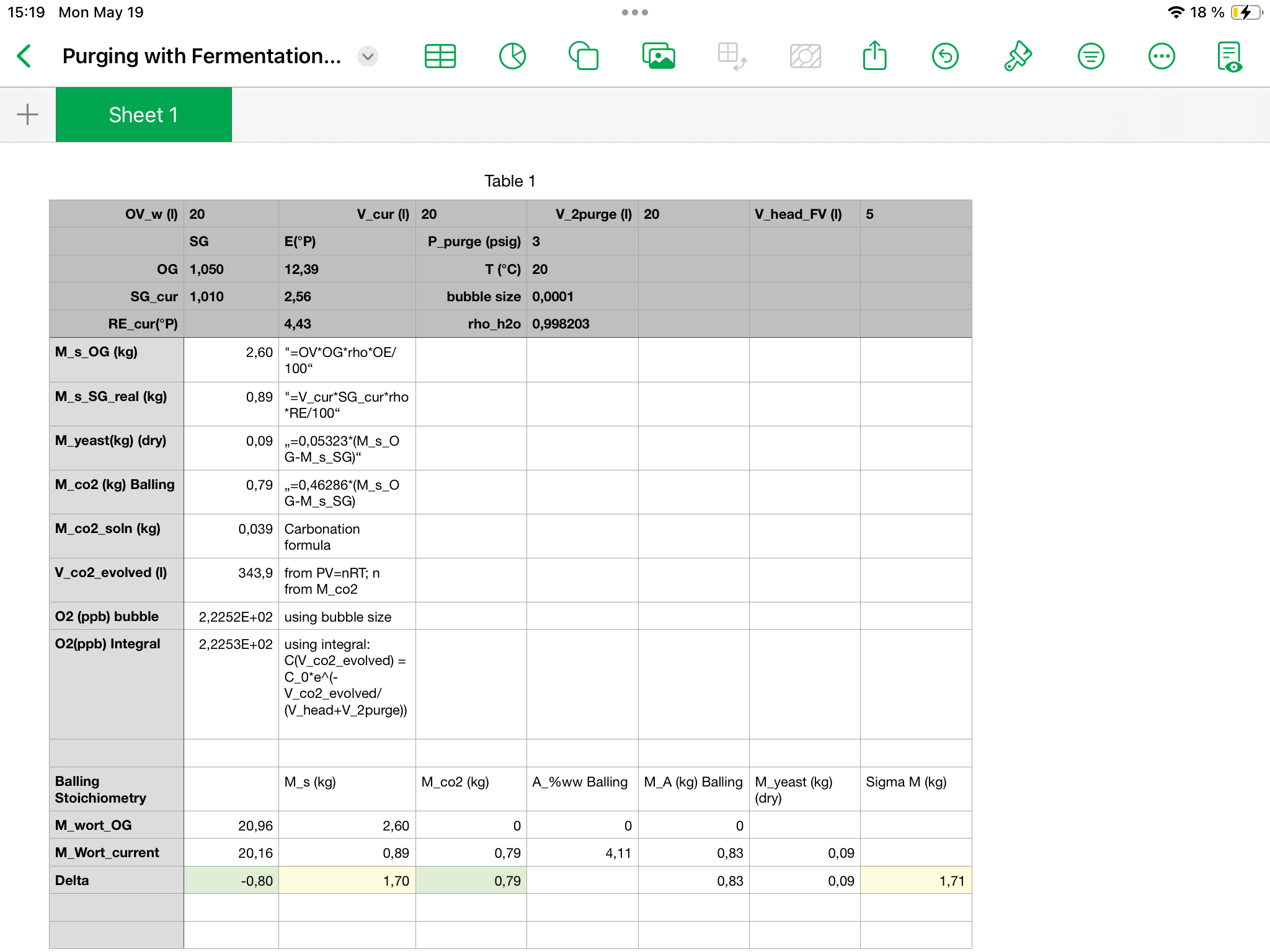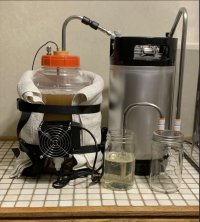I know I've said this before, and I may have in fact said it before in this thread.
ppb in these calculations refers to partial pressures, or number of molecules: at 1 ppb O2, one out of every billion gas molecules in the container is dioxygen.
ppb as it is usually used in beer packaging refers to the proportion of oxygen dissolved in the beer, by weight. So at 1 ppb O2, there is 1 microgram of dissolved oxygen per kilogram of beer.
There's roughly a factor of 1000 -- working in your (and your beer's) favor -- separating these two meanings.
Say you purge a 5-gallon keg to the point where it has 1 ppm (that's "m" as in million) O2. That is to say you have a volume of 20 liters and an O2 partial pressure of 1x10^(-6) atm, and the ideal gas law tells you that this means there is 25 micrograms of O2 in that keg.
Now fill that keg with beer, somehow without displacing any of the oxygen in it. 19 liters of beer weighs (at least) 19 kg, and if all 25 micrograms of O2 are dissolved in 19 kg of beer, you get a dissolved oxygen concentration of 1.3 ppb (that's "b" as in billion.)
Now, if a professional brewery works very hard and spends a great deal of money on the very best equipment available, they might get 10 ppb dissolved oxygen in a can or bottle of beer. So far as I know, 1 ppb is not possible with today's equipment.
All of which is to say that once you're pretty sure you've purged your keg to part-per-million O2 partial pressure, any further improvement is not meaningful. You're virtually 100% certain to have other sources of O2 to worry about that are much larger.
Returning a moment to the sentence "somehow without displacing any of the oxygen in it" ... in fact, when you transfer beer into the keg, you will be pushing at least some of the gas in the keg out. If you can manage to mostly fill the keg, you could be looking at another 10-fold improvement. If you make efforts to completely fill (or overfill) your keg, you could do even better.



































![Craft A Brew - Safale BE-256 Yeast - Fermentis - Belgian Ale Dry Yeast - For Belgian & Strong Ales - Ingredients for Home Brewing - Beer Making Supplies - [3 Pack]](https://m.media-amazon.com/images/I/51bcKEwQmWL._SL500_.jpg)


























